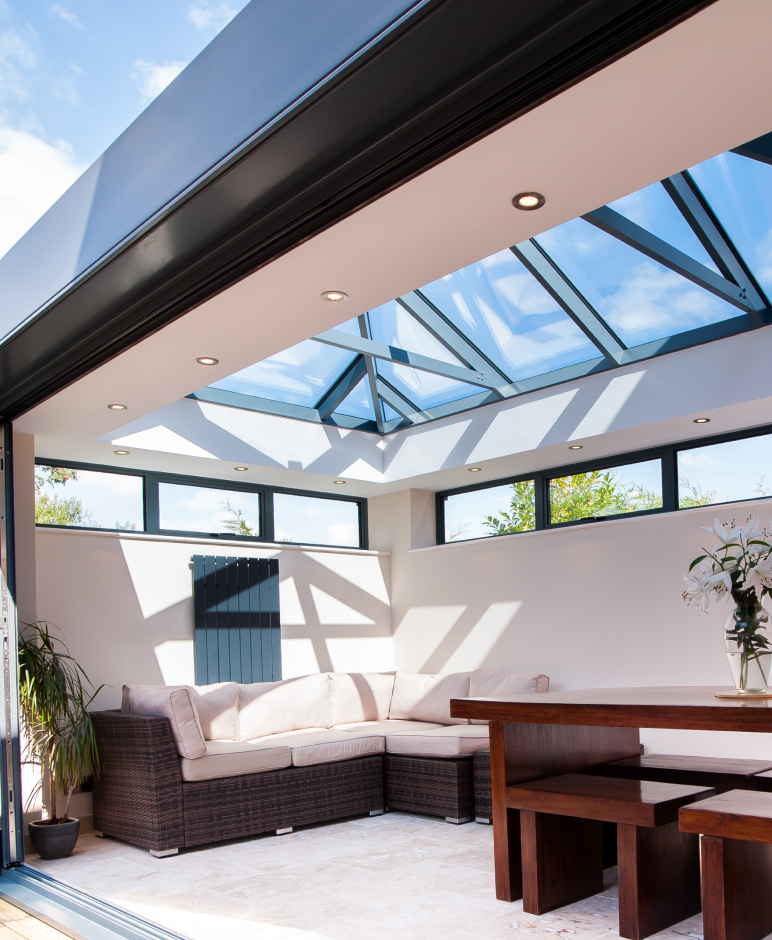Last Updated on 8 January 2025 by Josh Lucas
What You Need To Know About Energy Ratings Explained.
Energy ratings measure the energy efficiency of products like windows and doors, helping homeowners like you reduce energy waste, cut costs, and improve comfort.
Have you ever wondered why your home still feels chilly even after upgrading your windows? Or why do your heating bills seem to rise every winter? The answer might lie in understanding energy ratings.
These ratings don’t just measure efficiency; they’re your guide to making smarter home improvement choices.
Whether you’re replacing old windows, upgrading your doors, or adding a stylish roof lantern, energy ratings provide crucial insight into how well these products perform.
They indicate how much heat stays inside your home, how well your space utilises natural sunlight, and how effectively drafts are kept out.
This isn’t just about comfort—it’s about reducing energy bills and doing your part for the environment.
In this article, we’ll break down what energy ratings mean, how they apply to various home improvement products, and how you can use this knowledge to make informed decisions.
Let’s dive in and unlock the secrets to a more efficient, comfortable home!
A Quick Overview
- What Are Energy Ratings and Why Do They Matter?
- The Energy Rating Chart UK: A Homeowner’s Guide
- Energy Ratings Across Key Products
- How to Use Energy Ratings to Make Smarter Choices.
- FAQ’s
What Are Energy Ratings and Why Do They Matter?
Energy ratings are like a report card for your home improvement products, measuring how well they retain heat and prevent energy loss. In the UK, these ratings range from A++ (the most efficient) to G (the least efficient).
Lower Your Energy Bills by Reducing Heat Loss
Efficient products help keep the heat inside your home during colder months. This means your heating system doesn’t have to work as hard, saving you money.
Enhance Comfort by Maintaining Indoor Temperatures
Products with high energy ratings help stabilise indoor temperatures, keeping your home warm in winter and cool in summer, for year-round comfort.
Reduce Your Carbon Footprint
Energy-efficient products decrease energy usage, contributing to lower greenhouse gas emissions. This is a win for both your wallet and the planet.
Think of energy ratings as your tool to ensure every penny spent on heating stays where it belongs—inside your home.

The Energy Rating Chart UK: A Homeowner’s Guide
The UK energy rating chart is designed to simplify your choices when it comes to home improvement projects. It considers:
Thermal Insulation
This measures how effectively a product prevents heat loss. Products with excellent thermal insulation keep your home warm during winter and reduce reliance on heating.
Solar Gain
Solar gain measures how much natural heat from sunlight is harnessed by the product. While helpful in colder months, excessive solar gain can lead to overheating in summer.
Air Leakage
Air leakage rates indicate how well a product prevents drafts. Low air leakage ensures better efficiency and minimises heat loss.
For example, an A++ rated window is ideal for colder climates, offering superior insulation and minimising energy costs.
Energy Ratings Across Key Products
Windows
Your choice of windows can dramatically impact your home’s efficiency. Products like Deceuninck uPVC windows boast U-values as low as 0.8, offering incredible insulation. These windows also reduce noise and condensation, ensuring comfort throughout the year.
Pro Tip: When choosing windows, look for multi-chambered frames and low-emissivity (Low-E) glass for optimal performance.
Entrance and Composite Doors
From Solidor composite doors to Smart Signature Aluminium doors, GFD Homes offers a variety of high-performing options.
- Advanced Seals: These block drafts and enhance thermal efficiency.
- Multi-Point Locking Systems: Provides security and improved insulation.
- Low U-Values: Many GFD doors exceed UK standards for efficiency.
Bi-Fold and Sliding Doors
Large glass doors like Korniche Bi-Fold or Smart Visoglide Sliding Doors don’t just look great—they perform exceptionally well, too.
- Thermal Breaks: These minimise heat transfer, ensuring optimal efficiency.
- Advanced Glazing: Provides better insulation and noise reduction.
- Slim Profiles: Allow more natural light without compromising energy performance.
Roof Lanterns and Flat Rooflights
A Korniche Roof Lantern can transform your home’s aesthetics while maintaining energy efficiency. With possible U-values as low as 0.7, these roof lights help retain heat, even in expansive spaces.

How to Use Energy Ratings to Make Smarter Choices
Check the U-value
A lower U-value means better insulation. Always prioritise products with U-values that meet or exceed UK regulations.
Understand Solar Gain
Balance solar gain to maximise natural warmth without overheating your home. This is especially important for large glazed areas like sliding doors or roof lanterns.
Consider Weather Seals
Ensure your windows and doors include advanced weatherproof seals to block drafts and maintain efficiency.
Look for Certification
Products with A++ ratings or above offer the best efficiency. Look for trusted certifications, such as BFRC (British Fenestration Rating Council).
Example: Choosing double-glazed windows with argon-filled cavities can save up to £488 annually in energy costs.
Make the Smart Choice Today With GFD Homes
Understanding energy ratings is only the beginning. By choosing energy-efficient products, you’re not only improving the comfort of your home but also taking control of your energy bills and reducing your carbon footprint.
Imagine the difference it would make to have a home that stays warm in the winter and cool in the summer without skyrocketing energy costs.
Our range of high-performance windows, doors, and roof lanterns are designed to meet and exceed UK energy efficiency standards.
Whether it’s an A++ rated composite door or triple-glazed aluminium windows, each product is crafted to keep your home comfortable and your energy usage low.
Ready to start your journey to a more efficient home?
Let us guide you through the best options tailored to your needs and budget, call our expert team on 01642 309 576 or get an instant quote online at GFD Homes.
FAQs
How can I tell if my current windows or doors are energy efficient?
You can check for a manufacturer’s label or certification indicating the energy rating. Alternatively, look for signs like drafts, condensation between panes, or noticeable temperature fluctuations near the product.
Are triple-glazed windows worth it for energy efficiency?
Triple-glazed windows can offer superior insulation compared to double glazing, especially in colder climates. They have lower U-values and help reduce noise, making them a great choice for improving both energy efficiency and comfort.
What is a good energy rating?
A good energy rating is A or A++. These products offer the highest efficiency, saving money and reducing environmental impact.
What is a bad energy rating?
Anything below a C is considered inefficient. These products may lead to higher energy costs and less comfortable living spaces.
